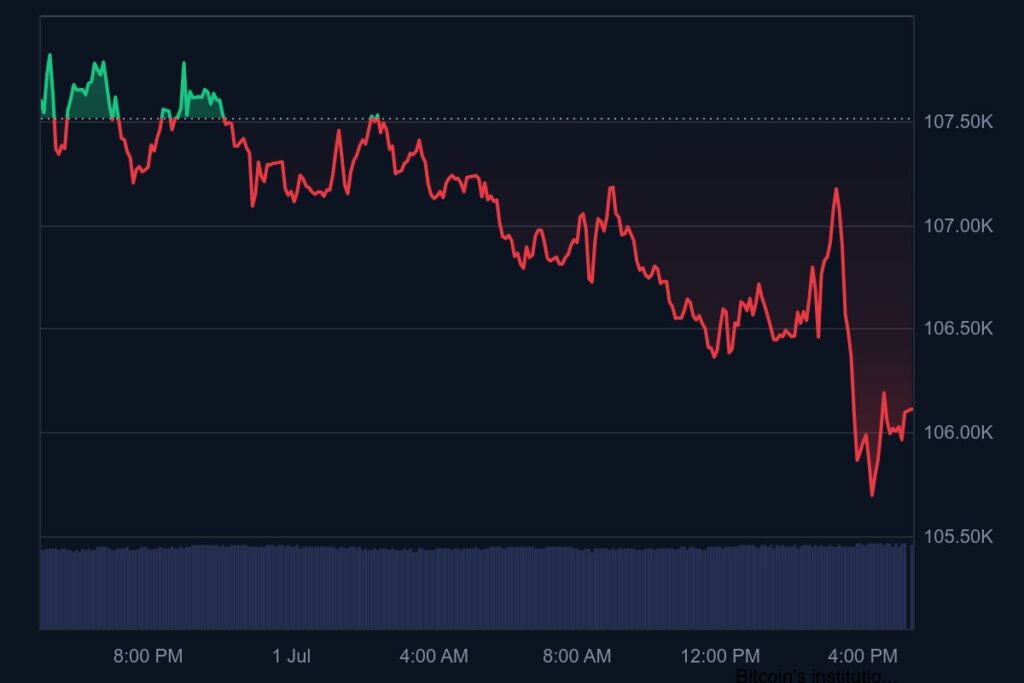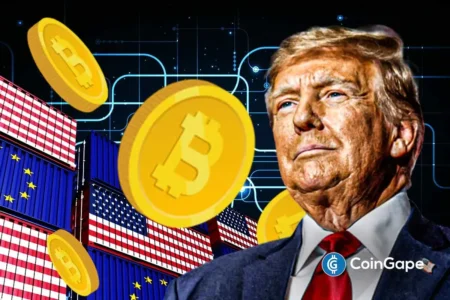The Impact of Trump’s Tax Bill on Bitcoin: A Closer Look at the ‘One Big Beautiful Bill’
In a significant political event, the US Senate has successfully passed the $3.3 trillion tax and spending cut bill, nicknamed the "One Big Beautiful Bill," thanks to a tie-breaking vote from Vice President JD Vance. This legislative development has immense implications, particularly for the cryptocurrency market. Following the Senate’s decision, Bitcoin (BTC) prices surged back above the crucial psychological threshold of $106,000, reflecting heightened market optimism regarding the future of cryptocurrencies.
Understanding the ‘One Big Beautiful Bill’
The "One Big Beautiful Bill" combines a dramatic $4.5 trillion in tax cuts with $1.2 trillion in spending cuts. Its passage through the Senate marks a crucial step before heading to the House for further deliberation. Supporters argue that the bill serves as a significant catalyst for economic growth and could positively influence asset prices, including Bitcoin. Conversely, critics are wary of the bill’s potential to increase the national debt, fundamentally altering the economic landscape.
Bitcoin’s Price Reaction
Data from CoinMarketCap indicates a notable rebound in BTC prices, rising from an intraday low of $105,689 to over $106,000. This resurgence can be linked to optimism surrounding the tax bill, which many believe could bolster the appeal of Bitcoin as an investment. Experts like John Deaton have suggested that the bill may act as a “walking billboard for buying Bitcoin,” highlighting how regulatory changes can swiftly influence investor sentiment and market dynamics.
The Broader Implications for the Crypto Market
Market analysts posit that the bill’s passage is not merely a political victory but signifies a broader acceptance of unconventional monetary policies. Arthur Hayes, co-founder of BitMEX, alluded to the fact that the government is unlikely to reverse course on money printing. This ongoing monetary expansion could create a more favorable environment for Bitcoin, which, due to its limited supply, offers an attractive hedge against inflation and currency devaluation.
Rising Debt and the Dollar’s Decline
One of the most significant aspects of the "One Big Beautiful Bill" is its provision to increase the US debt ceiling. By allowing the government to borrow more than it earns, this legislation could potentially weaken the dollar. In times of economic uncertainty or a declining currency, investors often flock to Bitcoin as a safe haven, further increasing its demand and driving up prices. Economic indicators suggest that the BTC price could continue to trend upwards as traditional fiat currencies face headwinds.
The Future of Bitcoin and Investor Sentiment
The sentiment within the Bitcoin community appears largely bullish following the passage of the tax bill. Market participants view this legislative development as indicative of a longer-term trend towards greater acceptance of cryptocurrencies by mainstream financial institutions and governmental bodies. As global economic conditions evolve, investors may increasingly recognize Bitcoin not just as a speculative asset but as a viable store of value, akin to gold.
Conclusion: What Lies Ahead for Bitcoin and Investors
In conclusion, the US Senate’s passage of the "One Big Beautiful Bill" marks a pivotal moment for both the nation’s economy and the cryptocurrency landscape. As Bitcoin surges past the $106,000 mark, it reflects not only market confidence but also the broader implications of fiscal policy on digital assets. As this financial saga unfolds, investors must remain vigilant, conducting thorough research and staying informed about the interconnections between economic policies and cryptocurrency markets. The future holds both challenges and opportunities for Bitcoin and its investors, and understanding the evolving landscape will be key to making informed decisions.
With potential volatility ahead and institutional interest on the rise, the dynamics of the cryptocurrency market are set for transformation as traditional economic policies converge with digital asset innovations.
















